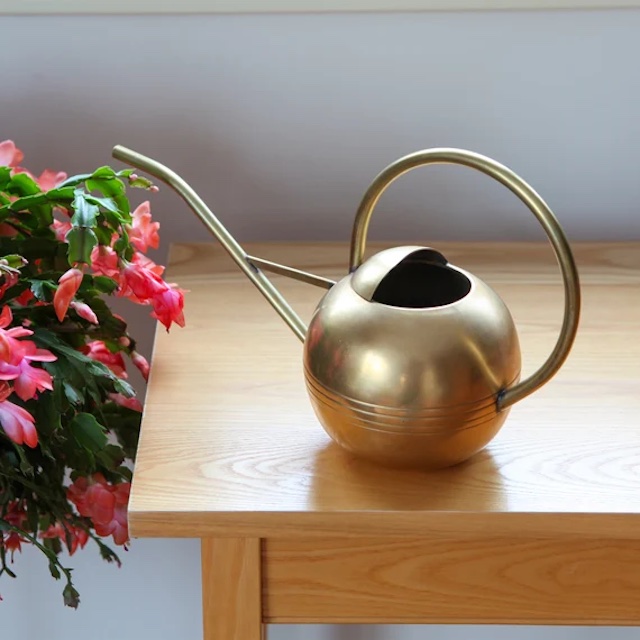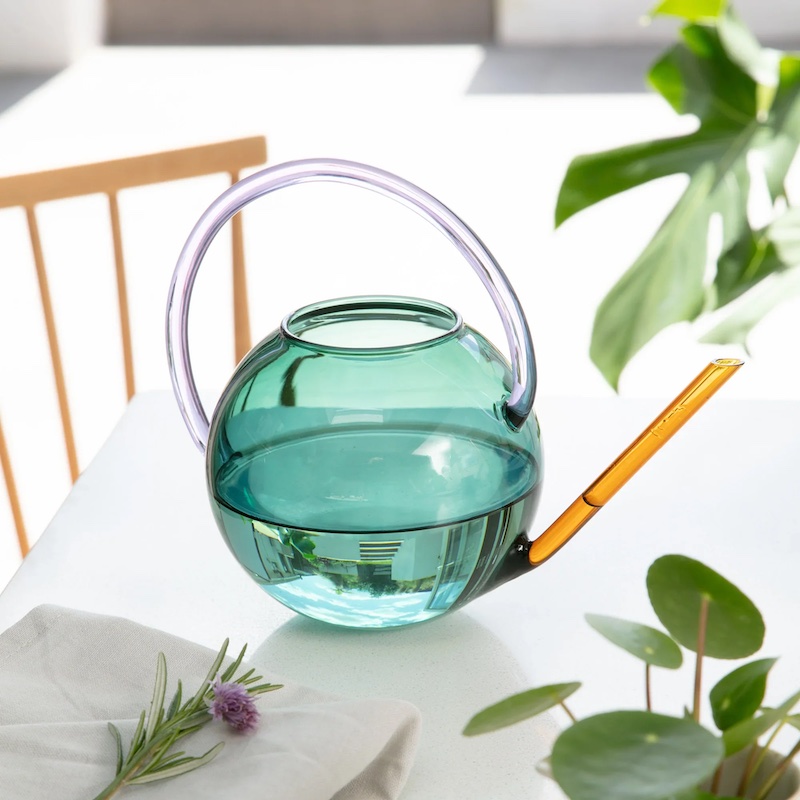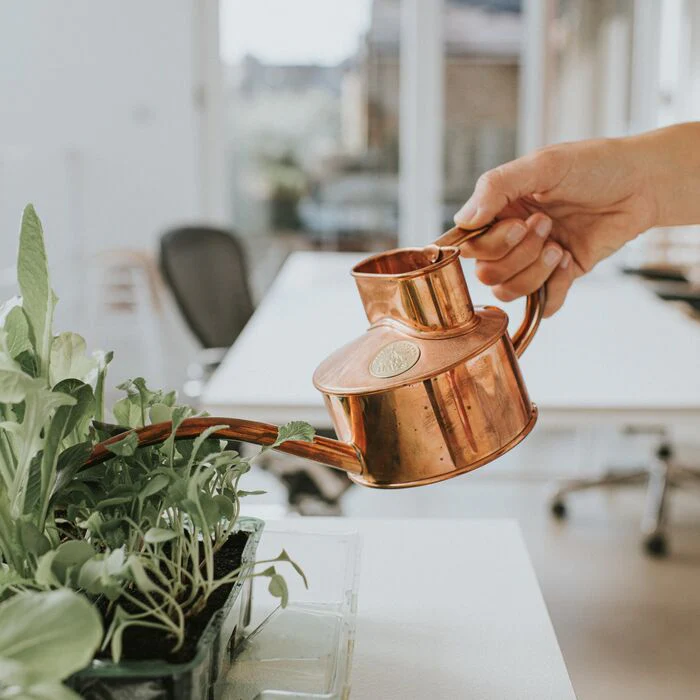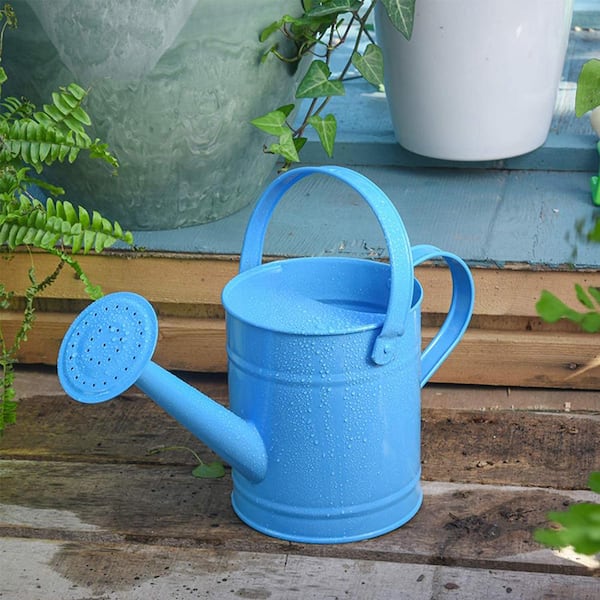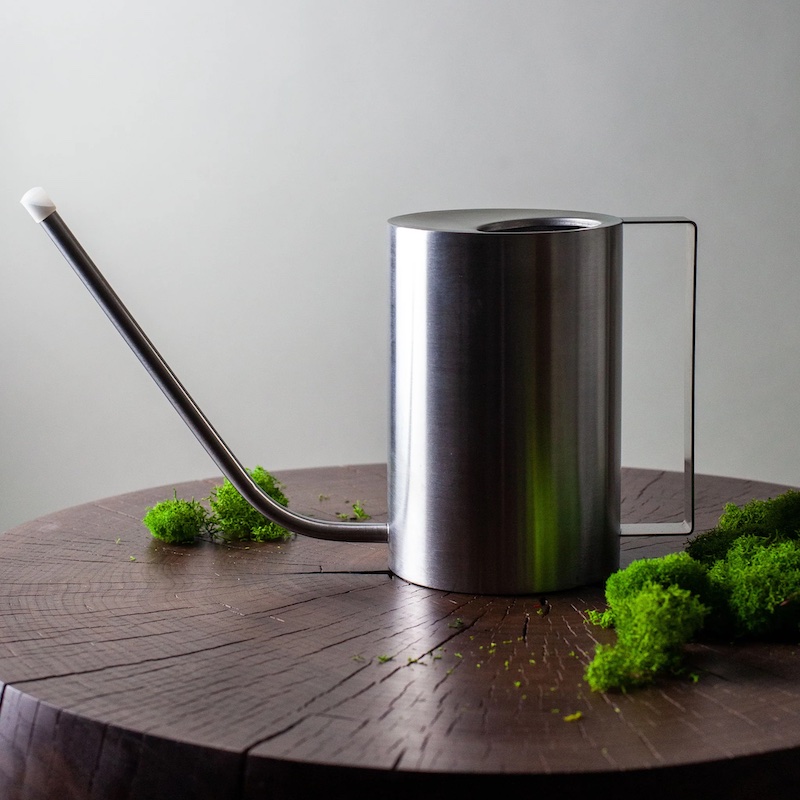
Choosing the Best Indoor Watering Can for Plant’s Health 2025
The Importance of Proper Indoor Plant Watering
Proper indoor plant watering sustains plant health. It promotes growth and prevents disease. Many indoor plants come from humid climates. They need regular, consistent moisture levels. Overwatering and underwatering can both cause harm. Roots can rot or dry out. Leaves may yellow, wilt, or drop off. Choosing the best indoor watering can helps avoid these issues. It allows for gentle, precise water delivery. This mimics natural rainfall, which plants have adapted to. A suitable can offers control over water flow and volume. This ensures that every plant gets just what it needs. Remember, the right can makes all the difference in plant care. Now, let’s explore the key features to look for in your next best indoor watering can.
Key Features to Look for in an Indoor Watering Can
When searching for the best indoor watering can, certain features make some standout. Consider these essentials:
- Capacity: Size matters. You’ll want a can that holds enough water for your indoor garden but isn’t too heavy when full.
- Material: Good cans come in different materials. Plastic is lightweight and affordable. Metal options lend durability and style. Go for one that fits your routine and decor.
- Spout Design: A spout with a gentle flow is key for precise watering. Look for a can with a narrow spout to reach between leaves without splashing.
- Balance and Handle Design: A comfortable grip and a well-balanced can ease your watering chores. It should feel good in your hand even after filling it up.
- Ease of Filling: Your watering can should fit under the sink tap easily. A wide opening helps avoid spills.
- Detachable Spout Heads: Some cans offer detachable heads. These can provide a soft shower or a steady stream, depending on your plant’s needs.
- Water Level Indicator: For those who prefer precision, some cans have level indicators. This helps you monitor how much water you’re giving to each plant.
Choosing the best indoor watering can with these features will streamline your plant care routine. It also ensures your plants thrive with just the right amount of water.
Types of Indoor Watering Cans
When hunting for the best indoor watering can, you’ll come across diverse types. Each serves different needs and preferences. Dive into these common types:
Long Spout Watering Cans
Long spout watering cans are optimal for reaching into thick foliage without disturbing plants. Their extended spouts ensure water reaches the soil, not the leaves, preventing fungal diseases. These cans are great for deep pots and hanging baskets. With a narrow and lengthy spout, you get precise control, minimizing spills.
Mini Watering Cans for Small Plants
Have a collection of succulents or small potted herbs? Mini watering cans deliver a fine amount of water for these delicate plants. They’re lightweight and easy to handle. Plus, their compact size fits snugly on a windowsill or shelf, always ready for quick touch-ups.
Decorative Watering Cans for Interior Aesthetics
Who says utility can’t be stylish? Decorative watering cans add a splash of charm to any room while fulfilling their purpose. They come in vibrant colors, elegant styles, and various materials. Some even serve as planters or vases when not in use, blending seamlessly with your decor.
Material Considerations for Durability and Style
Choosing the best indoor watering can isn’t just about function. It’s also about finding a piece that stands up to frequent use and complements your home’s interior. Here’s what to consider when it comes to materials:
Plastic Watering Cans
Plastic is a common choice for indoor watering cans. It’s lightweight, making it easier to carry around. Plastic cans resist rust and are often more affordable. However, they can vary in quality. Look for high-grade, BPA-free plastics for safety and longevity.
Metal Watering Cans
Metal cans offer durability and a classic look. They can withstand drops and rough handling. Metals like stainless steel or galvanized iron prevent rusting. Choose these if you desire a timeless style that lasts years.
Ceramic Watering Cans
Ceramic watering cans are pieces of art in themselves. They add a touch of elegance to your indoor garden. They’re heavier and more delicate than other materials but offer unique charm and sophistication.
Silicone and Other Modern Materials
Some modern watering cans incorporate silicone or rubber elements for flexibility and grip. These innovative materials may offer features like collapsibility for easy storage.
When picking the best indoor watering can for your needs, consider how often you’ll use it, the size of your indoor garden, and your personal aesthetics. Go with a material that meets your practical needs and suits your style preferences. Whether you favor practicality, durability, or design, there’s a material perfect for your watering tasks.
Top Indoor Watering Can Picks for 2025
Selecting the best indoor watering can is crucial for gardening enthusiasts. For 2025, we’ve curated a list of top picks to ensure optimal plant care. These watering cans combine functionality with style and durability, ensuring a pleasurable gardening experience.
Long Spout Watering Cans
Our 2025 selection includes long spout cans, ideal for reaching into dense plants. These cans distribute water evenly, right to the base of your plants. Their design minimizes risk of leaf fungus and spills. Their spouts provide precision, essential for plants in deep pots or hanging baskets.
Mini Watering Cans for Small Plants
For those who love smaller plants, our mini watering cans are perfect. They are light and simple to handle. Small in size, they fit easily in tight spaces, like shelves or windowsills. We’ve tested each one to ensure it offers the right amount of water for delicate plants.
Decorative Watering Cans for Interior Aesthetics
We also showcase decorative cans that double as home decor. These stylish options come in bold colors and elegant designs. They not only water plants efficiently but also enhance your room’s look. Some even act as vases, merging utility with aesthetics.
Our top picks for the best indoor watering can in 2025 cater to diverse needs and tastes. They make plant care easy and integrate well with your lifestyle. Choose one that fits your indoor gardening routine and personal style.
Ergonomic Design: Ensuring Comfort in Use
Ergonomic design is key for selecting the best indoor watering can. Comfort in use is just as important as the watering can’s functional features. When you water plants regularly, a can that’s awkward or heavy can strain your hands and wrists. An ergonomic watering can fits comfortably in your grip and maintains balance, even when full.
Here are some ergonomic features to look for:
- Lightweight Build: A can that’s easy to lift and move reduces fatigue. Lightweight materials help make this possible.
- Curved Handles: A handle with a natural curve can make holding and pouring more comfortable. This shape supports your hand’s natural position.
- Balanced Design: The best indoor watering cans should feel stable and easy to tilt. This balance helps prevent spills and reduces strain on your body.
- Non-Slip Grip: Look for a can with a handle that doesn’t slip in wet conditions. A secure grip ensures safe and precise pouring.
An ergonomic watering can improves your watering experience. It helps prevent discomfort during lengthy plant-care sessions. Remember to test the feel of a can before you purchase. Lift it, hold it, pretend to water – find one that feels like an extension of your hand.
Innovative Watering Cans: Exploring New Features and Technologies
With 2025’s gardening scene evolving, the best indoor watering can is also advancing. Manufacturers are bringing out cans with new features and technologies. These innovations aim to enhance plant care and user experience.
Here are the latest trends to look for:
- Self-Watering Cans: These cans do some of the work for you. They release water slowly over time, perfect for when you’re away.
- Digital Watering Reminders: Some watering cans now come with built-in timers or apps. They remind you when it’s time to water, ensuring your plants stay hydrated.
- Adjustable Flow Rates: Advanced cans offer settings for varied water flow. You can switch from a gentle mist to a steady stream with ease.
- Eco-Friendly Materials: Today’s best indoor watering cans are not just about style. They also respect the environment with recycled or biodegradable materials.
- Integrated Measuring Tools: Precision is key in watering. Select cans have built-in rulers or measuring reservoirs to help you give the exact amount of water.
These innovative watering cans are transforming the way gardeners care for their indoor plants. They add convenience and precision, setting the standard for the future. When choosing your next watering can, consider these modern options to make indoor gardening more efficient and enjoyable.
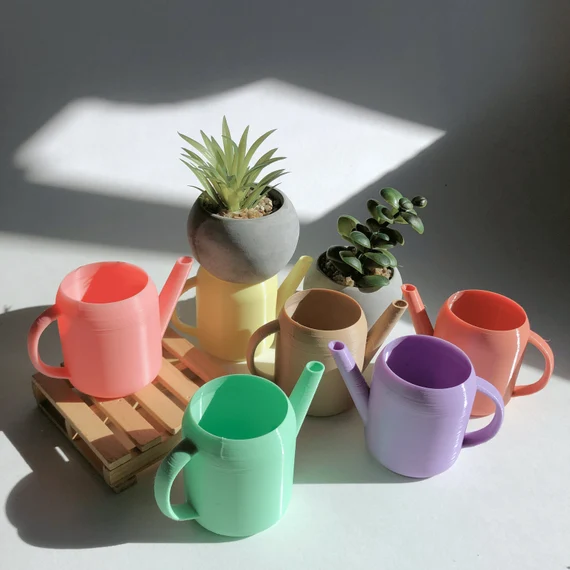
The Mini Watering Can: Perfect for Indoor Plants
The Importance of Proper Watering for Indoor Plants
Proper watering is vital for indoor plants. It promotes healthy root development and prevents common issues. Overwatering can lead to root rot, while under-watering can stress plants. This can stunt growth or even kill the plant. A mini watering can helps control the amount of water given to each plant. Its small size allows for precise watering, getting just the right amount to the root zone. This tool is especially handy for plants that need a consistent moisture level. Examples include ferns and African violets. A consistent watering schedule also wards off pests and diseases. It strikes a balance that is crucial for indoor plant care. Regular use of a mini watering can supports strong plant structure and vibrant foliage. In summary, a mini watering can is a simple but essential tool for plant owners. It ensures indoor plants thrive in their home environment.
Types of Mini Watering Cans
When it comes to choosing a mini watering can, you’ll find a variety of types available. These differing types cater to the diverse needs of both the plants and the plant owners. Selecting the suitable one can make a significant difference in how effectively you water your indoor plants.
Materials Used in Mini Watering Cans
Mini watering cans come in different materials, each with its pros and cons. Popular materials include:
- Plastic: Lightweight and affordable, plastic watering cans are great for those who have many plants to water. They don’t rust, which is a plus.
- Metal: Metal cans often have a classic look. They are durable and heavy-duty. However, they may be heavier and are prone to rusting unless they’re stainless steel.
- Ceramic: These are attractive and often come in decorative designs. They’re heavier than plastic and are fragile.
- Glass: A glass watering can be a stylish option. It’s perfect for delicate watering needs but is breakable, so it requires careful handling.
Each material has its lifecycle and environmental impact, which might influence your choice.
Designs and Features of Mini Watering Cans
The design and features of a mini watering can affect how well it performs. Key features include:
- Long spouts: Long, narrow spouts help with precise watering, getting water right to the roots where it’s needed.
- Detachable heads: Some cans have detachable heads for a gentle shower, ideal for young or delicate plants.
- Handles: Look for a comfortable handle design, as it makes the watering can easier to carry and pour without straining your wrist.
- Measurement marks: Some cans have marks that indicate the volume of water, helping you track how much water you’re giving to each plant.
Incorporating these features into your choice will enhance the watering experience and the health of your indoor plants. By considering the material and design features of a mini watering can, you can ensure precise and efficient watering every time.
How to Choose the Right Mini Watering Can
Choosing the right mini watering can is key to plant care. Consider size, spout, and design for the best fit.
Size and Capacity
The size of your mini watering can should match your needs. If you have many small plants, a smaller can will do. For those with larger plants or more to water, go for a bigger capacity. This helps avoid frequent refills.
Spout Length and Shape
The spout’s length and shape are crucial for reaching into tight spots. A long spout helps target water to the plant’s base without wetting foliage. Go for a narrow spout for accuracy. A sprinkler head is good for a gentle shower on delicate plants.
Ergonomic Design and Ease of Use
Comfort matters when watering plants. Look for a mini watering can with a comfy handle. This will make it easy to carry and pour. Also, choose a design that is easy to tilt and control to reduce wrist strain.
Benefits of Using a Mini Watering Can
A mini watering can offers several benefits for indoor gardening. Its design and size bring convenience and precision to the routine of watering houseplants.
Precision Watering and Avoiding Overwatering
One of the top benefits is precision watering. The mini watering can’s small spout delivers water exactly where plants need it. This avoids the common problem of overwatering. With a mini watering can, you give each plant the right amount of water. This is key to preventing root rot and other water-related issues.
Accessibility for Tight Spaces
Another advantage is easy access to tight spaces. Whether between crowded pots or in a densely packed plant stand, a mini watering can reaches in with ease. Its compact size makes watering in challenging spots a breeze.
Enhancing Plant Health and Growth
A mini watering can help keep your indoor plants healthy and growing well. By providing just the right amount of water directly to the roots, it promotes stronger growth. Your plants will show their appreciation with lush leaves and vibrant blooms.
Tips for Maintaining Your Mini Watering Can
To make the most of your mini watering can, it’s important to maintain it well. Proper maintenance ensures it works efficiently and lasts longer. Here are some tips to keep it in top shape:
Cleaning and Storage
After each use, empty the mini watering can. This prevents stagnant water, which can cause mold and rust. Rinse it inside and out with clean water. For a deeper clean, use a mild soap and a soft brush. Dry it thoroughly before storing. Store the can in a dry place to avoid moisture build-up. If it’s metal, this will prevent rusting. For long-term storage, a cabinet or a shelf keeps it dust-free.
Routine Checks for Leaks or Damage
Regularly inspect your mini watering can for leaks or damage. Small cracks can turn into bigger leaks over time. Metal cans can get dents or rust spots. If you find a leak, fix it right away to avoid water wastage. Check the spout for clogs. Use a thin wire to remove any debris. Check the handle to make sure it’s secure. Tighten any loose parts. These simple checks help prolong the life of your mini watering can.
Creative Uses for Mini Watering Cans Beyond Watering
A mini watering can is more than just a tool for hydration. Its usefulness extends beyond watering, adding value in other surprising ways. Explore creative uses to get the most out of this versatile tool.
As Plant Humidifiers
Mini watering cans can double as plant humidifiers. This is helpful for plants that thrive in moist environments. Simply fill your can with water, and gently sprinkle your plants. The fine mist mimics a natural humid setting. This acts as a humidity boost, especially during dry seasons. It can keep tropical plants like orchids and ferns happy.
Decorative Purposes
Beyond their functionality, mini watering cans are also charming decor items. Use them to add a touch of greenery to your living space. They can hold cut flowers, creating a quaint and rustic vase. Place them on shelves or tables for a homey feel. You can even paint and personalize cans to match your decor. This way, they serve as eye-catching pieces that reflect your personal style. Mini watering cans are popular among plant enthusiasts, urban gardeners, and those with limited space for gardening. They make an attractive and functional addition to any plant care routine.
